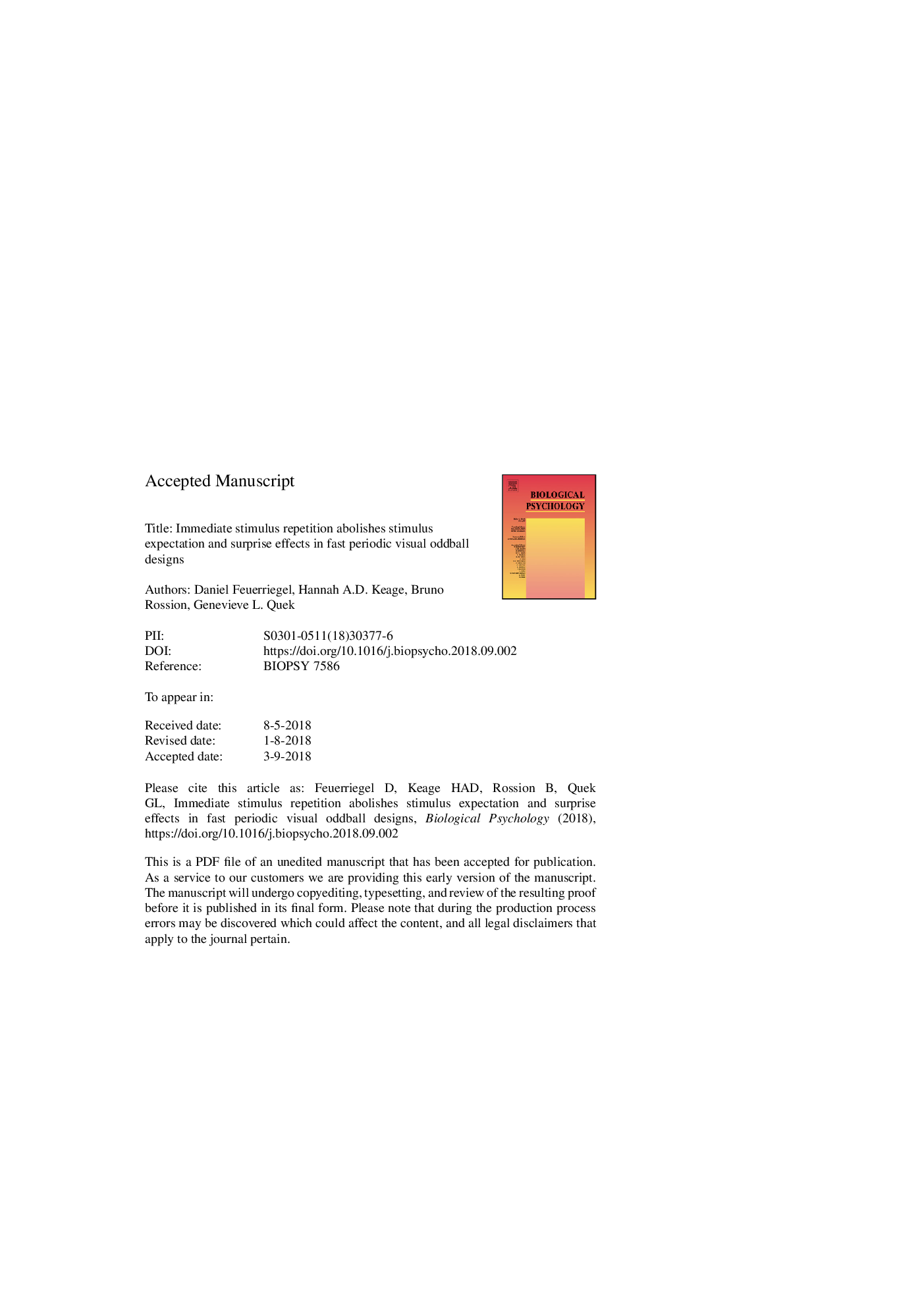| Article ID | Journal | Published Year | Pages | File Type |
|---|---|---|---|---|
| 9952974 | Biological Psychology | 2018 | 51 Pages |
Abstract
Oddball designs are widely used to investigate the sensitivity of the visual system to statistical regularities in sensory environments. However, the underlying mechanisms that give rise to visual mismatch responses remain unknown. Much research has focused on identifying separable, additive effects of stimulus repetition and stimulus appearance probability (expectation/surprise) but findings from non-oddball designs indicate that these effects also interact. We adapted the fast periodic visual stimulation (FPVS) unfamiliar face identity oddball design (Liu-Shuang et al., 2014) to test for both additive and interactive effects of stimulus repetition and stimulus expectation. In two experiments, a given face identity was presented at a 6âHz periodic rate; a different identity face (the oddball) appeared as every 7th image in the sequence (i.e., at 0.857âHz). Electroencephalographic (EEG) activity was recorded during these stimulation sequences. In Experiment 1, we tested for surprise responses evoked by unexpected face image repetitions by replacing 10% of the commonly-presented oddball faces with exact repetitions of the base rate face identity image. In Experiment 2, immediately repeated or unrepeated face identity oddballs were presented in high and low presentation probability contexts (i.e., expected or surprising contexts), allowing assessment of expectation effects on responses to both repeated and unrepeated stimuli. Across both experiments objective (i.e., frequency-locked) visual mismatch responses driven by stimulus expectation were only found for oddball faces of a different identity to base rate faces (i.e., unrepeated identity oddballs). Our results show that immediate stimulus repetition (i.e., repetition suppression) can reduce or abolish expectation effects as indexed by EEG responses in visual oddball designs.
Keywords
Related Topics
Life Sciences
Neuroscience
Behavioral Neuroscience
Authors
Daniel Feuerriegel, Hannah A.D. Keage, Bruno Rossion, Genevieve L. Quek,
